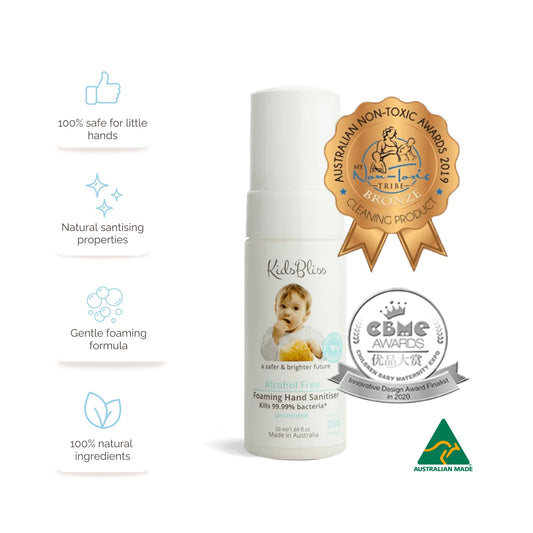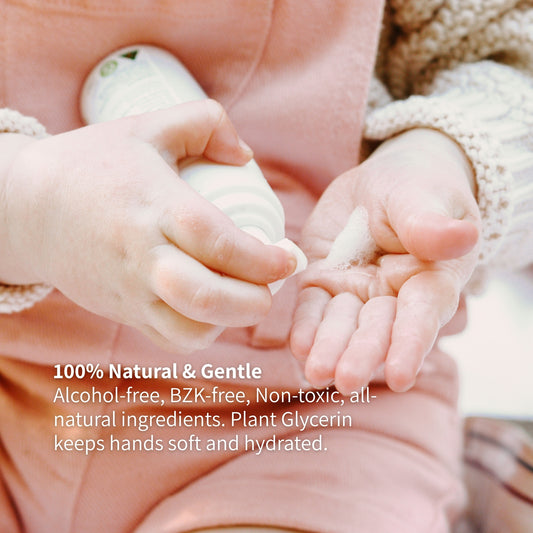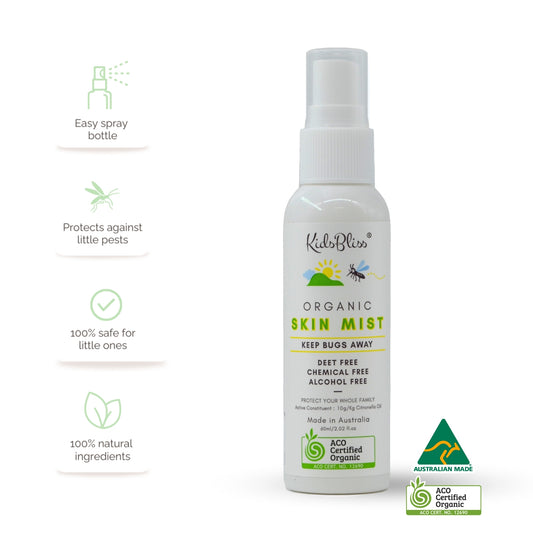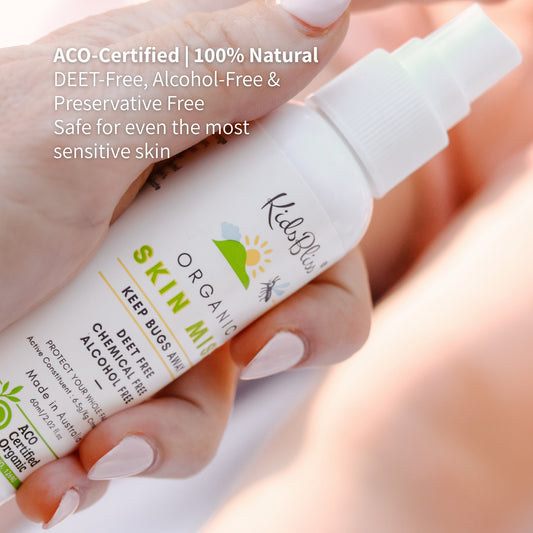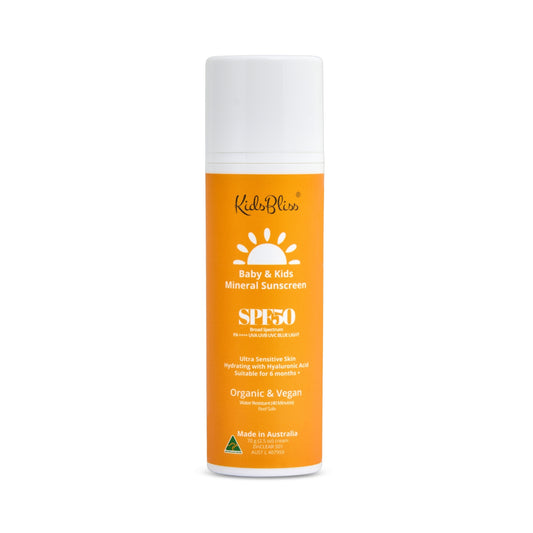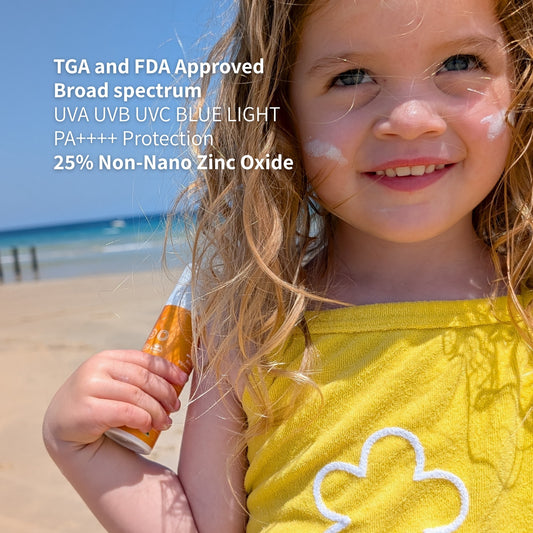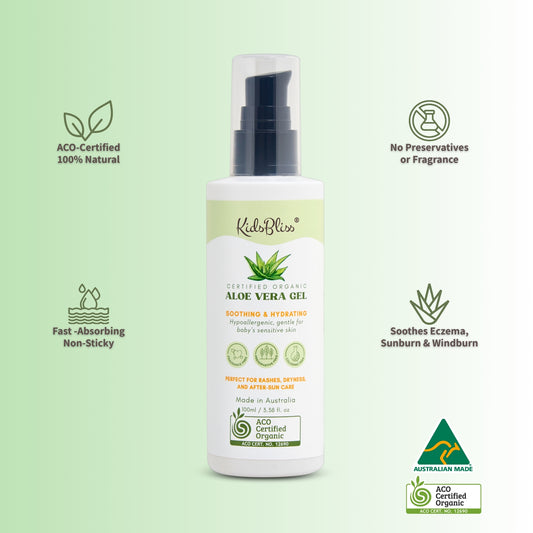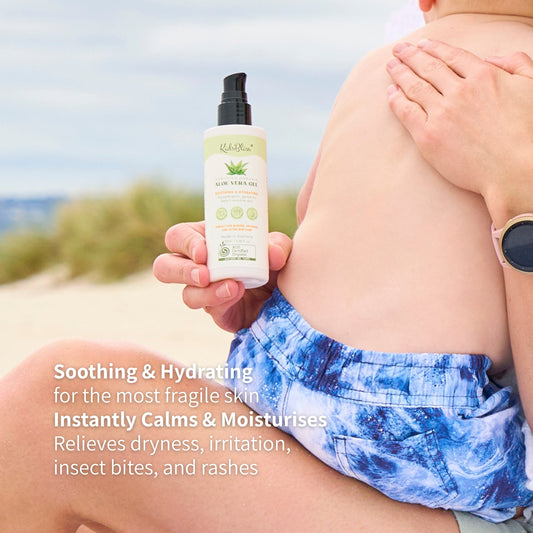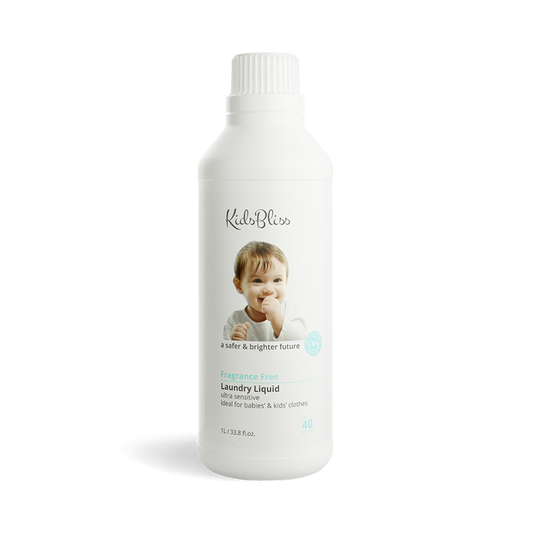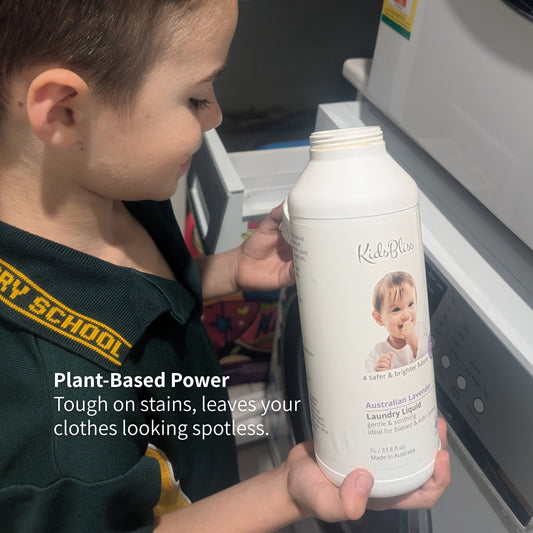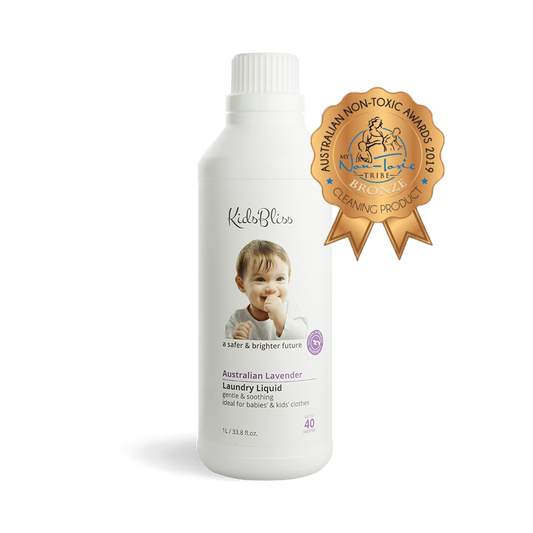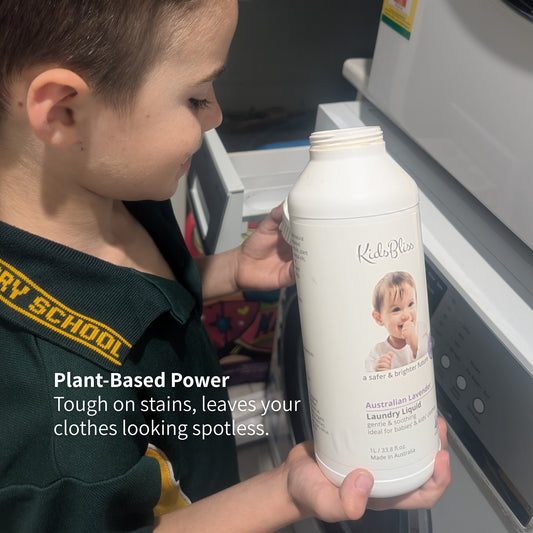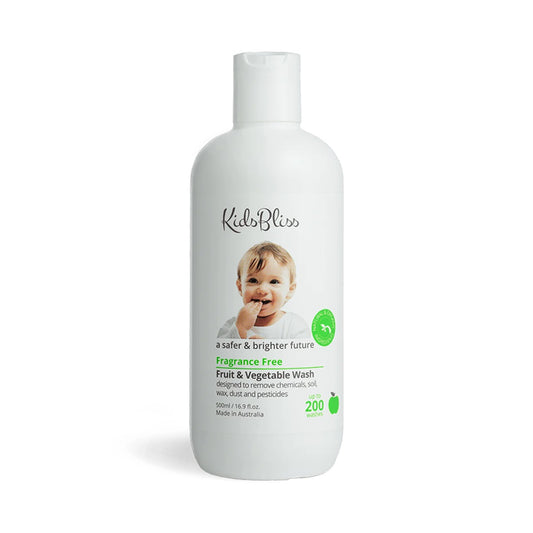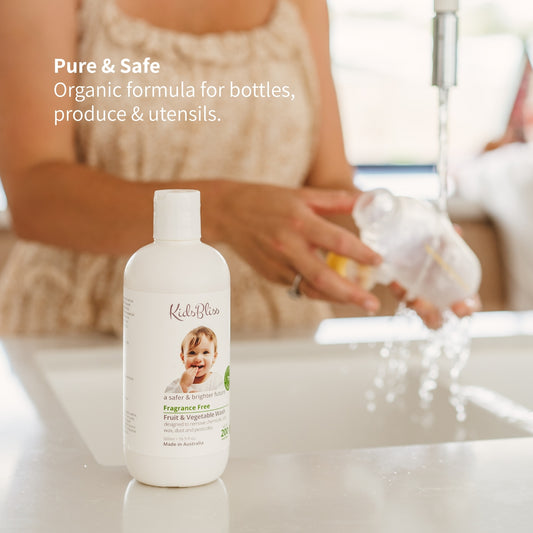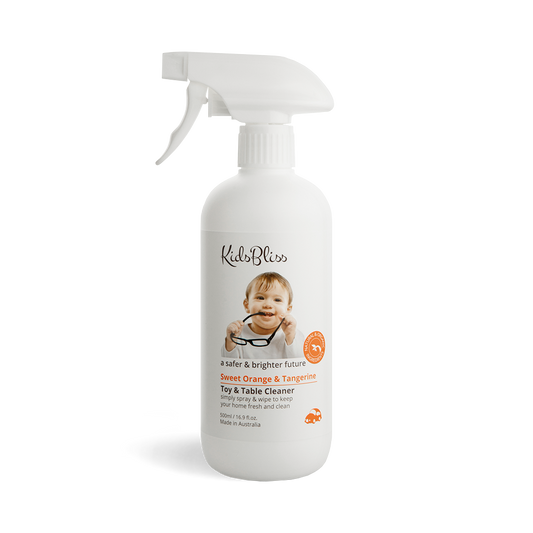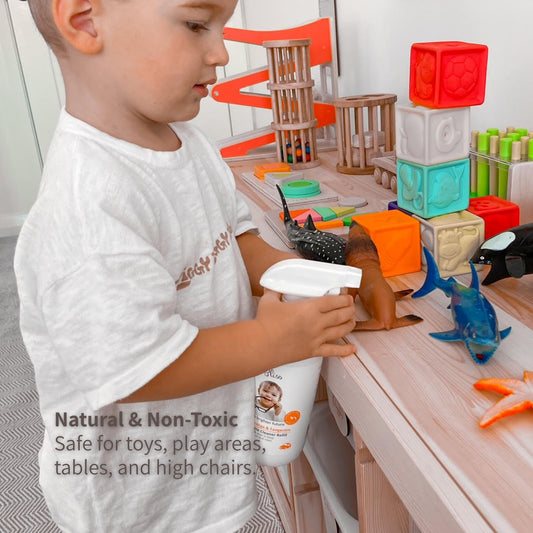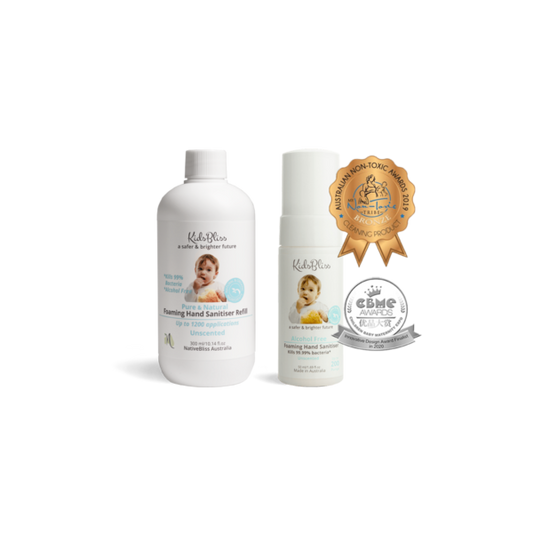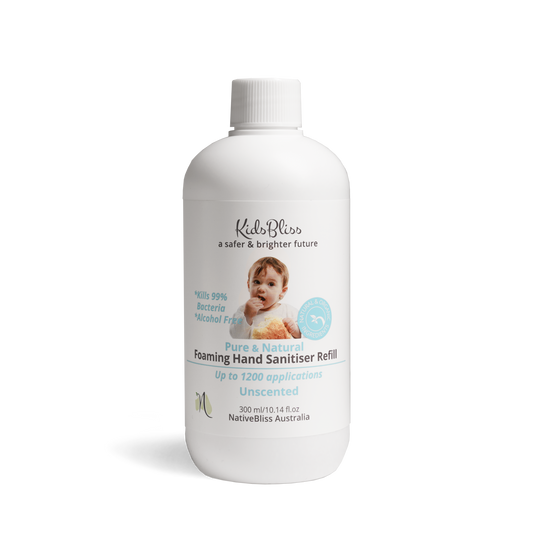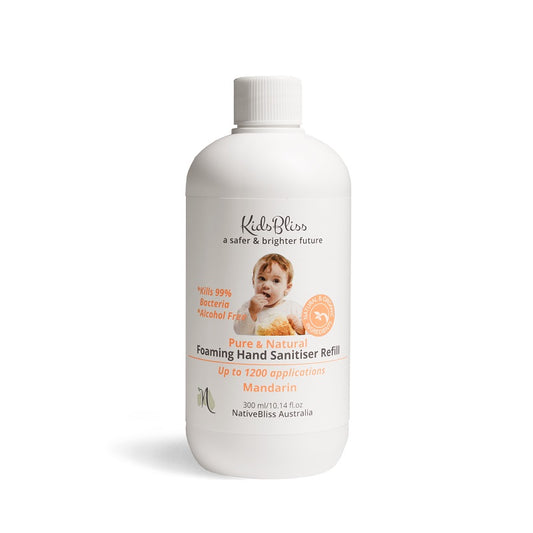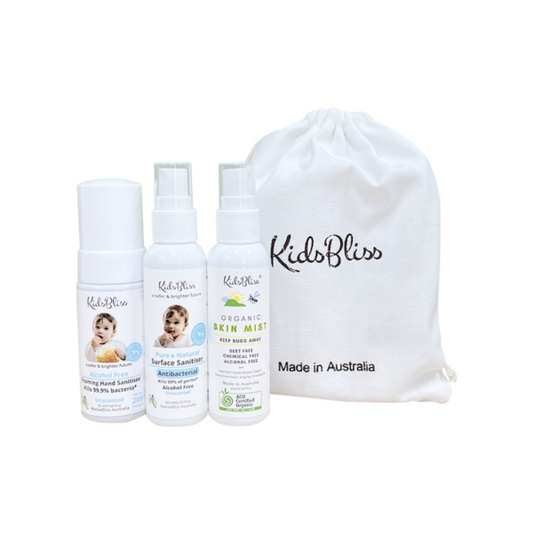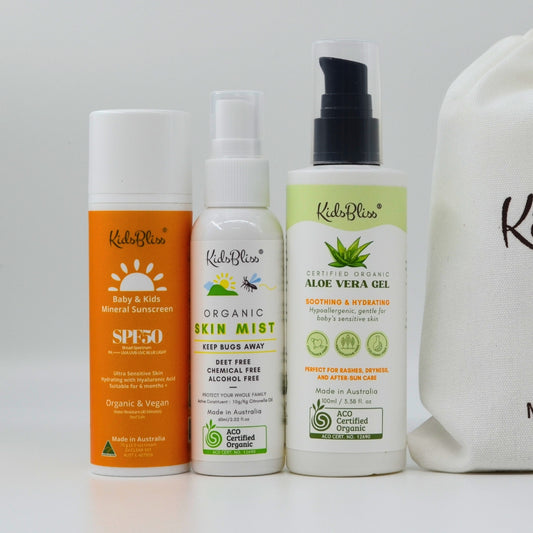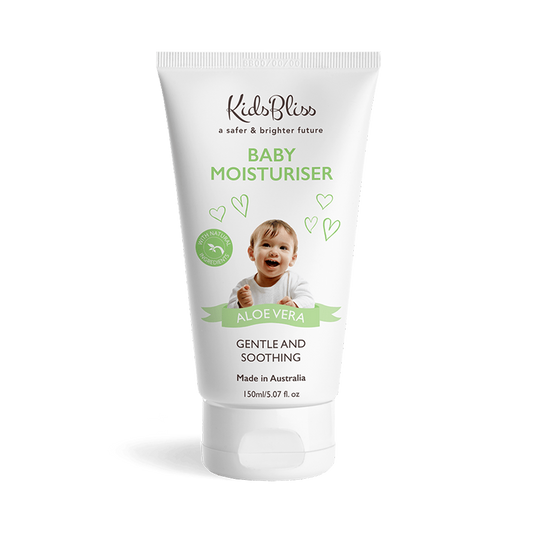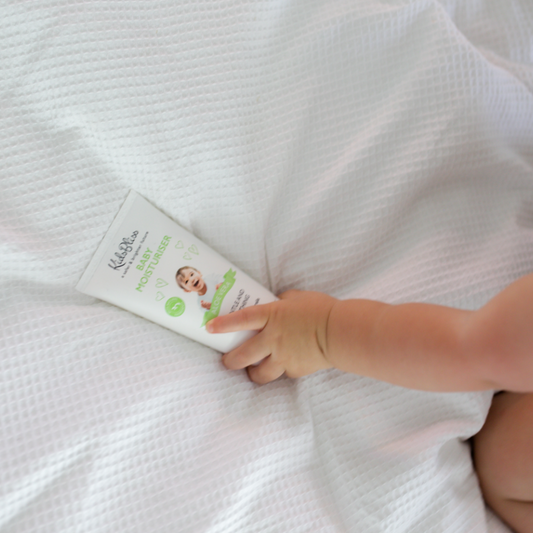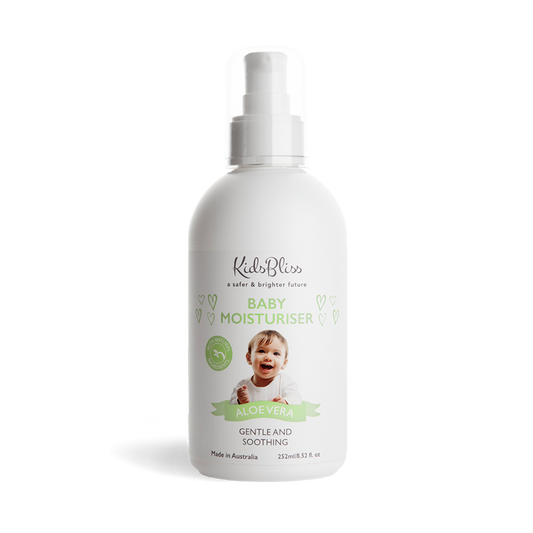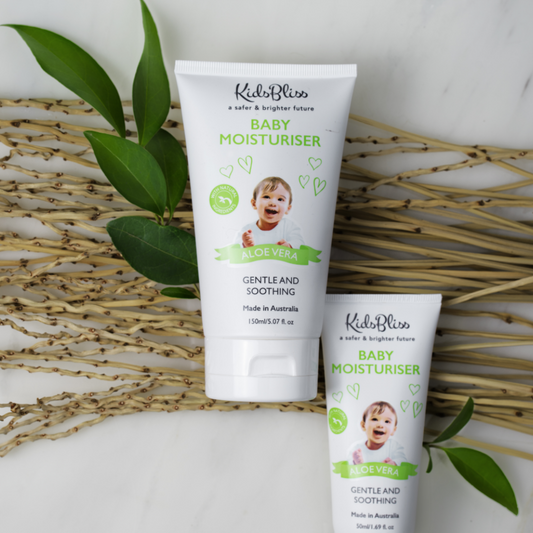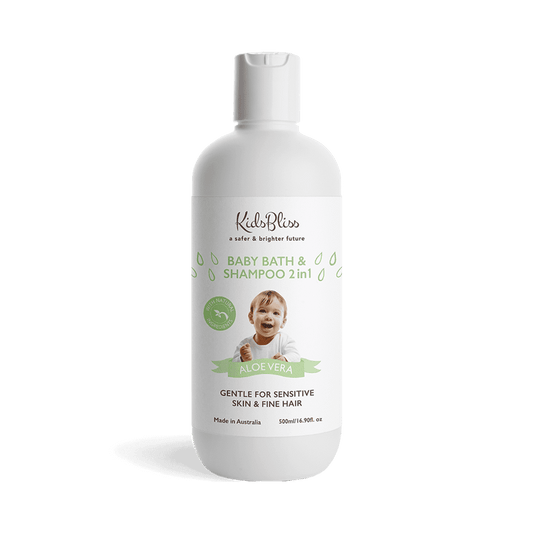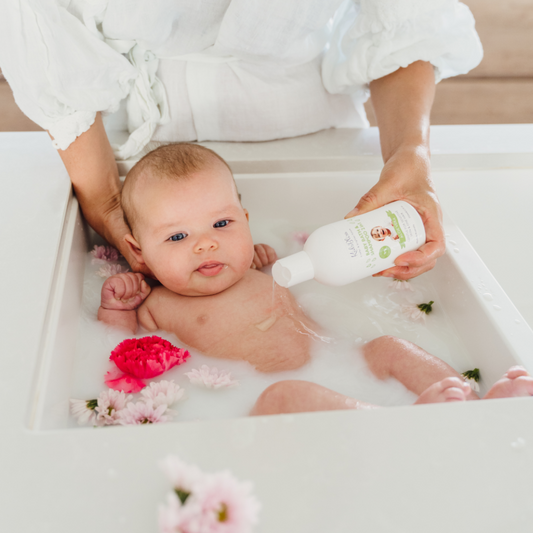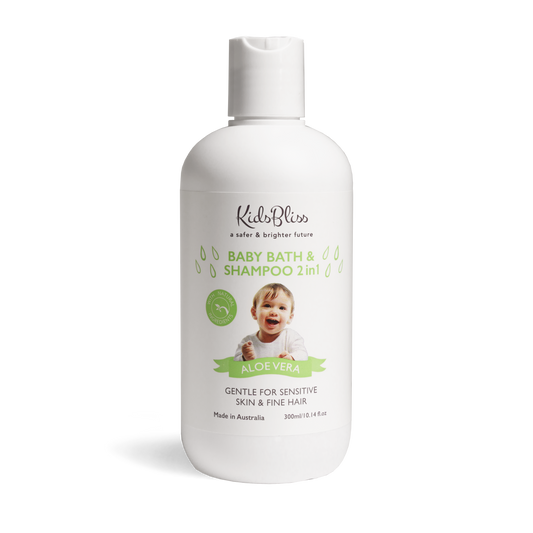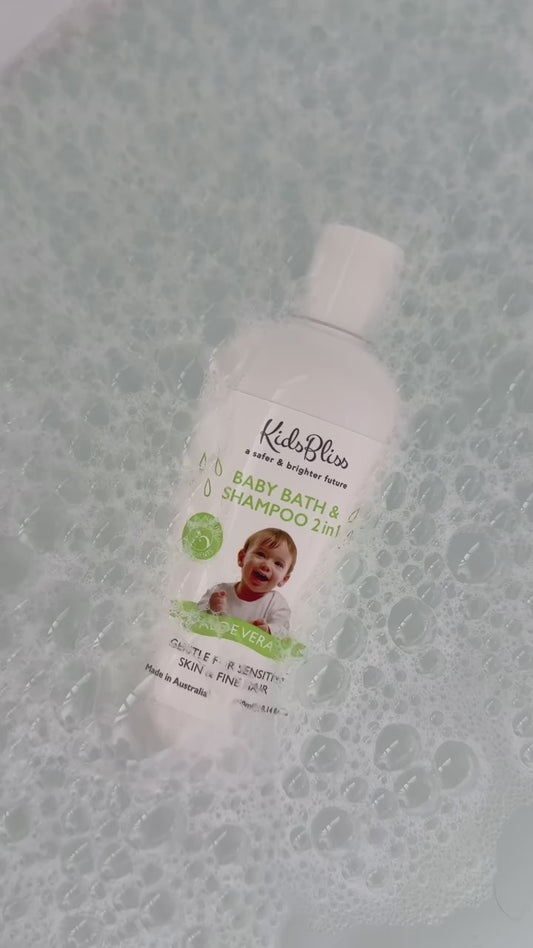🎧 Busy Parent? Listen to the Quick Summary (5 mins)
The Unseen Risk: Why Your Baby’s Skin is Uniquely Vulnerable
Welcoming a new baby into the world brings an unparalleled sense of joy and an instinct to protect. While parents are diligent about car seats, safe sleep, and nutrition, one of the most pervasive and misunderstood environmental risks is sun exposure. The warm glow of the sun feels benign, but for an infant, it carries a significant and lifelong threat. Understanding the unique biological reasons for this vulnerability is the first step in building a comprehensive shield of protection. The approach to sun safety for an infant is not merely about preventing the temporary discomfort of a sunburn; it is a critical, long-term health intervention aimed at preventing life-threatening disease decades down the line. The diligence applied in the first year of life pays dividends in health for a lifetime.
The Delicate Architecture of Infant Skin
A baby’s skin is a marvel of softness and sensitivity, but its structure is fundamentally immature. Compared to an adult's, an infant's skin is significantly thinner and less developed, making it a much weaker barrier against environmental aggressors, particularly ultraviolet (UV) radiation.1 The epidermis, the outermost layer of the skin, is approximately 20% thinner in infants, while the stratum corneum—the very top layer that acts as the primary shield—is 30% thinner.3 This reduced thickness means that harmful UV rays can penetrate more deeply into the skin's layers, reaching vulnerable cells and causing damage more readily.
Compounding this structural immaturity is a critical deficiency in the skin's natural defense mechanism: melanin. Melanin is the pigment that gives skin, hair, and eyes their color, and it serves as a natural sunblock by absorbing and dissipating UV radiation.4 A baby is born with very little melanin, and the production of this protective pigment ramps up slowly after birth.5 Research indicates that a baby's permanent skin tone and full melanin-producing capacity may not be fully established until they are around 6 to 20 months old.7 This means that throughout their entire first year, infants of all skin colors and ethnicities have significantly less innate protection against the sun than they will have as toddlers and older children.1 This biological reality underscores why external protection is not just advisable but absolutely essential.

More Than Just a Burn: The Lifelong Consequences of Early Sun Exposure
Every moment an infant's unprotected skin is exposed to the sun, a process of damage begins at the cellular level. UV radiation harms the DNA within skin cells, and this damage is cumulative.9 Think of it as a "damage account" in the skin; each exposure makes a deposit, and the balance grows over a lifetime. While the body has repair mechanisms, they are not perfect, and repeated damage can lead to mutations that may eventually result in skin cancer.
The link between sun exposure in childhood and the development of skin cancer in adulthood is not theoretical; it is a stark, evidence-based reality. Epidemiological research strongly supports the hypothesis that sun exposure during childhood initiates the mutational steps that can lead to melanoma later in life.9 The statistics are sobering and should command the attention of every new parent:
-
Just one blistering sunburn during childhood or adolescence nearly doubles a person's lifetime risk of developing melanoma, the most aggressive and deadliest form of skin cancer.11
-
Experiencing five or more blistering sunburns before the age of 20 can increase the risk of melanoma by a staggering 80%.14
These findings reframe the entire conversation around sun safety. Protecting an infant from the sun is not a matter of seasonal precaution or avoiding a temporary, painful rash. It is a foundational act of disease prevention. The first 20 years of life are the most critical window for mitigating long-term skin cancer risk, making the habits established in infancy the most impactful.11 The damage incurred in these early months is latent, often not revealing its devastating consequences until decades later.16 Therefore, every measure taken to shield a baby from UV rays is a direct, medical intervention to safeguard their future health.
The First Six Months (0-6 Months): A Foundation of Shade and Shelter
The first six months of a baby's life represent a period of extreme vulnerability. Their skin is at its thinnest, their melanin production is at its lowest, and their bodies are not yet equipped to handle the chemicals in sunscreen. During this critical window, the approach to sun safety must be absolute and uncompromising. The rules are simple, clear, and backed by a consensus of medical experts, including the American Academy of Pediatrics (AAP) and the U.S. Food and Drug Administration (FDA).18
The Golden Rule: Zero Direct Sun Exposure
For infants under six months of age, there is one paramount rule: keep them out of direct sunlight entirely.1 This is not a suggestion but a firm medical recommendation. Their skin simply cannot withstand the intensity of UV radiation without sustaining damage.4
This rule is especially crucial during the peak UV hours of the day, which are generally between 10 a.m. and 4 p.m..1 During this time, the sun's rays are at their most direct and damaging. Parents should make a conscious effort to schedule any necessary outdoor activities, such as walks or errands, for the early morning (before 10 a.m.) or late afternoon (after 4 p.m.) when the UV index is lower.1
Your Sun-Safety Toolkit (Part 1: The Non-Negotiables)
Building a protective barrier for your young infant involves a multi-layered strategy where physical barriers are the primary tools.
Mastering Shade
Shade is the single most effective and important form of sun protection for a baby under six months.22 It should be the first line of defense in every outdoor situation. This includes:
-
Natural Shade: Whenever possible, position your baby under the dense shade of a tree, a building overhang, or a covered patio. These natural shelters provide excellent protection.22
-
Portable Shade: For situations where natural shade is unavailable, such as at a park or beach, portable shade is essential. Invest in a high-quality stroller with a large, adjustable canopy that has a UPF rating. Clip-on parasols, pop-up tents with a UPF 50+ rating, and other purpose-built sun shields are indispensable tools.1 A critical safety warning must be heeded: NEVER drape a blanket, muslin cloth, or any other cover over a stroller or pram. While well-intentioned, this practice is extremely dangerous. It severely restricts airflow, trapping heat and creating a greenhouse-like effect that can quickly lead to dangerous overheating and increase the risk of Sudden Infant Death Syndrome (SIDS).23 Always use professionally designed, breathable sunshades.
The Power of Clothing
After shade, clothing is the next essential layer of defense.25 The goal is to cover as much of the baby's delicate skin as possible.
-
Fabric and Weave: Choose lightweight, long-sleeved shirts and long pants made from tightly woven fabrics. A simple test is to hold the fabric up to the light; the less light that passes through, the more protective it is.1 It is a common misconception that a standard white cotton t-shirt offers adequate protection; in reality, it may have an Ultraviolet Protection Factor (UPF) of only 5, which is insufficient.23
-
UPF-Rated Clothing: For maximum assurance, opt for clothing with a designated UPF rating. UPF measures the amount of UVA and UVB radiation that penetrates the fabric and reaches the skin. A garment with a UPF of 30 is good, but a rating of UPF 50+ is the gold standard, blocking at least 98% of UV rays.1 Numerous brands now offer a wide range of UPF 50+ clothing for infants, including full-body suits, rompers, and shirts, designed to be breathable and comfortable even in warm weather.27
Essential Accessories for Full Coverage
Even with shade and clothing, certain areas remain exposed and require dedicated protection.
-
Hats: A hat is a non-negotiable accessory for any infant outdoors. The best choice is a wide-brimmed hat that provides ample shade for the entire face, scalp, ears, and the back of the neck.1 Baseball caps are inadequate because they leave the delicate skin of the ears and neck completely exposed to the sun.18 Look for hats with a chin strap to help keep it securely in place.
-
Sunglasses: An infant's eyes are also highly susceptible to UV damage. The melanin in their eyes is still developing, offering less natural protection.5 Experts report that as much as 80% of a person's lifetime UV damage to the eyes occurs before the age of 18, making early protection critical.1 Choose baby-sized sunglasses that are labeled to block 100% of UVA and UVB rays (often labeled as UV400). Models with soft, elastic straps are ideal as they are more comfortable and more likely to stay on.1
-
Car Safety: A common oversight is sun exposure during car rides. While standard car window glass blocks most UVB rays (the burning rays), it allows a significant portion of UVA rays (the aging and DNA-damaging rays) to pass through.22 To protect your baby, use removable mesh window shields that cling to the inside of the window or invest in professionally installed UV-blocking window film, which can screen out nearly 100% of UV radiation without impairing visibility.1
The Sunscreen Question: Why We Wait
The firm recommendation to avoid sunscreen on infants under six months is based on several key physiological and behavioral factors.
-
Physiological Risk: A baby's skin is not only thinner but also has a much higher surface-area-to-body-weight ratio than an adult's. This combination increases the potential for chemicals from sunscreen to be absorbed into their system.1 An infant's metabolic and excretory systems are still maturing, making them less efficient at breaking down and eliminating these absorbed chemicals.1
-
Risk of Reaction: The sensitive and still-developing nature of infant skin makes it more prone to adverse reactions, such as contact dermatitis or other rashes, from the ingredients commonly found in sunscreens.18
-
Behavioral Risk: Perhaps one of the most subtle dangers is that applying sunscreen can create a false sense of security for parents. This might tempt them to keep their baby in the sun for longer than is safe, inadvertently increasing the risk of not only sun damage but also overheating (hyperthermia) and dehydration, as an infant's ability to regulate their body temperature is also underdeveloped.18
In cases of unexpected and unavoidable sun exposure where adequate shade and clothing are simply not an option, the AAP and many dermatologists concede that applying a minimal amount of mineral-based sunscreen to small, exposed areas (like the face and the backs of the hands) is preferable to allowing the baby to get a sunburn.4 However, this should be viewed strictly as an emergency measure, not as a deviation from the primary rule of total sun avoidance.

Entering the Sun (6-12 Months): A New Chapter in Protection
Once a baby reaches the six-month milestone, their skin has matured slightly, and their system is better equipped to handle topical products. This marks the point where sunscreen can be safely introduced into their sun protection routine. However, this is a moment for careful integration, not relaxation of standards. Sunscreen is not a replacement for the foundational safety habits established in the first six months; it is an additional layer of defense in a comprehensive, multi-faceted strategy.
The Integrated Approach: Sunscreen as the Final Layer
The core principles of sun safety remain unchanged for babies aged 6 to 12 months. Shade and protective clothing continue to be the most crucial and effective lines of defense.1 Parents should still prioritize keeping their baby in the shade, especially during peak UV hours, and dressing them in UPF-rated long-sleeved clothing and wide-brimmed hats.
Sunscreen is now introduced to serve a specific purpose: to protect the small areas of skin that remain exposed despite these measures. This typically includes the face, the back of the neck, the tops of the hands, and the feet.1 It is the final step in a complete protective system, applied only after all other physical barriers are in place.

Decoding the Sunscreen Aisle: A Parent’s Guide to a Safe Choice
The sunscreen aisle can be an overwhelming place for parents, filled with a dizzying array of products and marketing claims. However, for a baby, the choice is simple and absolute. Only one type of sunscreen is recommended: mineral sunscreen.
Mineral vs. Chemical: The Only Choice for Your Baby
Understanding the fundamental difference between the two main categories of sunscreen is crucial for making a safe choice.
-
Mineral (Physical) Sunscreens: These products are the gold standard for babies and children. Their active ingredients are naturally occurring minerals: zinc oxide and/or titanium dioxide.22 These ingredients work by forming a physical barrier that sits on the surface of the skin. They do not need to be absorbed. Instead, they act like millions of tiny mirrors, reflecting and scattering harmful UV rays away from the skin before they can cause damage.22 Because they are not absorbed into the bloodstream, they are considered exceptionally safe.39 They are also far less likely to cause skin irritation, making them ideal for sensitive baby skin.40 In fact, zinc oxide is a well-known skin-soothing agent and is the primary active ingredient in many diaper rash creams, highlighting its gentle nature.38
-
Chemical Sunscreens: These sunscreens utilize synthetic chemical compounds such as oxybenzone, avobenzone, octinoxate, and homosalate as their active ingredients.38 They function in a completely different way. They must be absorbed into the skin, where they trigger a chemical reaction that converts incoming UV radiation into heat, which is then released from the skin.34 There are several concerns associated with chemical sunscreens for babies. They are more likely to cause skin irritation and allergic reactions.42 Furthermore, studies have shown that these chemicals can be absorbed into the bloodstream and have been detected in body fluids like breast milk.38 Some of these chemicals are also considered potential endocrine (hormone) disruptors.38 Given these risks, the clear and consistent recommendation from pediatricians and dermatologists is to exclusively use mineral-based sunscreens on babies and young children.34

Reading the Label Like an Expert
When selecting a mineral sunscreen for your baby, look for these key features on the label:
-
Active Ingredients: The active ingredient list should clearly state "zinc oxide" and/or "titanium dioxide".38
-
SPF 30 or Higher: The Sun Protection Factor (SPF) indicates the level of protection against UVB rays. An SPF of at least 30 is recommended, as it blocks approximately 97% of UVB rays.1 While higher SPFs are available, the increase in protection is marginal (SPF 50 blocks ~98%). Consistent and proper reapplication is far more important than seeking an ultra-high SPF number.
-
Broad-Spectrum: This is a non-negotiable term. It certifies that the sunscreen provides protection against both UVB (burning) rays and UVA (aging and deep-skin-damaging) rays.1
-
Water-Resistant: It is important to understand that no sunscreen is truly "waterproof" or "sweat-proof".1 Products labeled "water-resistant" have been tested to remain effective for a specific duration while swimming or sweating. The label will indicate this for either 40 minutes or 80 minutes. After this time, or after towel drying, reapplication is mandatory.1
-
Avoid Sprays: For babies, it is best to avoid aerosol spray sunscreens. It is difficult to apply an even, sufficiently thick coat to ensure proper protection, and there is a significant risk of the baby inhaling the airborne particles, which can be harmful to their lungs.35 Stick to lotions, creams, or non-aerosol sticks, which allow for more controlled and thorough application.35
|
Feature |
Mineral (Physical) Sunscreen |
Chemical Sunscreen |
|
Active Ingredients |
Zinc Oxide, Titanium Dioxide 22 |
Oxybenzone, Avobenzone, Octinoxate, Homosalate 38 |
|
How It Works |
Sits on top of the skin, forming a physical barrier that reflects and scatters UV rays 22 |
Absorbed into the skin, where it converts UV radiation into heat and releases it 34 |
|
Recommended For |
Babies, children, and adults with sensitive skin 39 |
Older children and adults with non-sensitive skin 39 |
|
Key Benefits |
- Generally Recognized as Safe and Effective by the FDA 35 - Less likely to cause skin irritation or allergic reactions 40 - Not absorbed into the bloodstream 39 - Provides immediate protection upon application 22 |
- Tends to be thinner and spreads more easily - No white cast on the skin |
|
Potential Concerns |
- Can leave a white cast on the skin (though modern formulas are improving) 35 |
- Higher potential for skin irritation and allergic reactions 38 - Active ingredients are absorbed into the bloodstream 38 - Some ingredients are potential hormone disruptors 38 |
|
Verdict for Babies |
The only recommended choice. |
Avoid. |
Application Mastery: Getting It Right Every Time
Choosing the right sunscreen is only half the battle; proper application is what makes it effective.
-
Patch Test First: Before slathering a new sunscreen all over your baby, it is wise to perform a patch test. Apply a small amount to a discreet area of skin, such as the inside of their wrist or elbow. Wait for 24 to 48 hours to ensure there are no signs of redness, rash, or irritation.1
-
Apply Early and Generously: For mineral sunscreens to be effective, they need to be applied as the final layer on the skin. For chemical sunscreens (which should be avoided for babies), they need time to be absorbed. A good rule of thumb for any sunscreen is to apply it 15 to 30 minutes before heading outdoors.1 Be generous with the amount; most people apply only 25-50% of the amount needed to achieve the stated SPF protection.
-
Techniques for a Wiggly Baby: Applying sunscreen to a mobile baby can be a challenge. Turn it into a positive experience by making it a game or singing a special "sunscreen song".45 Sunscreen sticks are excellent for the face, as they are less messy and reduce the risk of getting product in the baby's eyes.25 If sunscreen does get in their eyes, gently wipe their eyes and hands with a clean, damp cloth.46 Involving them in the process by letting them "help" rub it in can also increase cooperation.
-
The Reapplication Rule: This is the most critical and most frequently forgotten step. Sunscreen is not a one-and-done application. Its effectiveness degrades over time and with activity. It must be reapplied at least every two hours, and more often if the baby has been swimming, sweating heavily, or has been dried with a towel.1 Set a timer on your phone as a reminder.

Beyond the Basics: Overcoming Common Sun-Safety Hurdles
Even with the best intentions, real-world situations and persistent myths can undermine a parent's sun safety efforts. Addressing these common hurdles with clear, evidence-based information is key to maintaining a consistent and effective protective strategy.
Debunking Dangerous Myths
Misinformation about sun safety is rampant. Believing these myths can have serious consequences for your baby's health.
-
Myth 1: "It's cloudy, so we're safe."
-
The Reality: This is one of the most dangerous misconceptions. Up to 80% of the sun's UV radiation can penetrate through clouds, fog, and haze.4 A cool or overcast day can create a false sense of security, leading to unexpected and severe sunburns. Sun protection is a daily necessity, regardless of the weather forecast.
-
Myth 2: "We're just in the car/stroller, so my baby is protected."
-
The Reality: As previously mentioned, UVA rays penetrate standard window glass, meaning your baby is still being exposed to harmful radiation during car rides.22 Similarly, while a stroller canopy provides shade, it doesn't offer complete protection. UV rays can reflect off surfaces like pavement, sand, and water, bouncing under the canopy and reaching your baby's skin.22 A multi-layered approach (car window shades, UPF clothing) is always necessary.
-
Myth 3: "A 'base tan' will protect my baby."
-
The Reality: There is no such thing as a safe or protective tan. A tan is, by definition, a visual sign of injury—it is the skin's response to DNA damage caused by UV radiation.4 The idea that intentionally exposing a baby to the sun to "build tolerance" is a dangerous fallacy that actively increases their cumulative sun damage and future skin cancer risk.5
-
Myth 4: "It's okay to use my adult sunscreen on the baby."
-
The Reality: Adult sunscreens are not formulated for a baby's unique needs. They are more likely to be chemical-based and often contain fragrances, preservatives, or other ingredients that can cause irritation, rashes, or allergic reactions on a baby's delicate and permeable skin.22 Always choose a sunscreen specifically formulated for babies or sensitive skin, which will be mineral-based and free of unnecessary additives.
Sun Safety in Every Scenario
Applying the principles of sun safety requires adapting to different environments. Here are specific strategies for common situations:
-
Daily Walks: Utilize the stroller's UPF-rated sun shade and extend it fully. Plan your route to take advantage of natural shade from trees and buildings. Dress the baby in a lightweight UPF 50+ onesie and a wide-brimmed hat, even for short walks.22
-
Beach or Pool Day: This high-exposure environment demands maximum protection. Set up a UPF 50+ pop-up tent or a large, sturdy beach umbrella as a home base. Dress the baby in UPF 50+ swimwear, which includes long-sleeved rash guards and full-coverage suits. Be hyper-vigilant about reapplying water-resistant sunscreen every 40 or 80 minutes (as per the label) and immediately after they come out of the water and are towel-dried. Remember that both sand and water are highly reflective surfaces that can significantly increase UV exposure, even in the shade.22
-
Backyard or Park Play: Create a designated shaded play area using a shade sail, a large umbrella, or by setting up under a large tree. Schedule outdoor playtime to avoid the peak UV hours of 10 a.m. to 4 p.m..22
-
Winter and Snow: Sun protection is a year-round concern. Snow can reflect up to 80% of UV rays, nearly doubling the exposure to the face and eyes.4 When in snowy environments, even on a cold day, it is crucial to apply sunscreen to the baby's face and wear UV-protective sunglasses.
The Vitamin D Dilemma
Parents are rightly concerned about their baby's Vitamin D levels, as this nutrient is essential for healthy bone development. Since the body synthesizes Vitamin D in response to sun exposure, it can seem like sun safety and adequate Vitamin D are in conflict.
However, the medical and dermatological consensus is clear. The amount of sun exposure needed to produce Vitamin D is minimal—far less than the amount required to cause redness or DNA damage.9 Therefore, parents should not rely on unprotected sun exposure to meet their baby's Vitamin D needs.9 Deliberately exposing a baby to the sun without protection, even for a short time, is not recommended, even for infants diagnosed with a vitamin D deficiency.9 The risk of skin cancer far outweighs the benefit. The safest and most reliable way to ensure your baby gets enough Vitamin D is through supplements, as recommended by your pediatrician.
|
Category |
Item |
Check |
Notes |
|
Shade & Shelter |
Stroller with UPF 50+ Canopy/Shade |
☐ |
Ensure it is fully extended. |
|
Portable UPF 50+ Pop-Up Tent or Umbrella |
☐ |
For park, beach, or backyard. |
|
|
Car Window Shades |
☐ |
Protects against UVA rays during travel. |
|
|
Clothing & Wearables |
Lightweight, Long-Sleeved UPF 50+ Outfit |
☐ |
A full-body suit or romper is ideal. |
|
Wide-Brimmed Hat |
☐ |
Must shade the face, ears, and neck. |
|
|
UV400 Sunglasses with Strap |
☐ |
Labeled for 100% UVA/UVB protection. |
|
|
Sunscreen (6M+) |
Mineral-Based (Zinc/Titanium) |
☐ |
Check the active ingredients. |
|
Broad-Spectrum SPF 30 or Higher |
☐ |
Protects against both UVA and UVB rays. |
|
|
Applied 15-30 Minutes Before Going Out |
☐ |
Allow time for it to set. |
|
|
Packed for Reapplication |
☐ |
Reapply at least every 2 hours. |
|
|
Hydration & Comfort |
Ample Breast Milk or Formula |
☐ |
Offer more frequent feeds in the heat. |
|
Cooled, Boiled Water (for 6M+ only) |
☐ |
Offer small sips with solids or between feeds. |
|
|
Cooler Bag for Liquids |
☐ |
Keep milk, formula, and water fresh. |
When the Heat is On: Integrating Sun and Heat Safety
Sun safety and heat safety are inextricably linked. The same sunny conditions that pose a UV risk also create a significant danger of overheating and dehydration for infants. A baby's body is far less efficient at regulating temperature than an adult's; they heat up faster and have a limited ability to cool themselves down through sweating.18 This physiological immaturity means that proactive prevention of heat-related illness is just as critical as protection from UV rays.
The danger of heat illness in an infant is often silent and progresses rapidly. Unlike an adult who can verbalize thirst or feeling unwell, an infant's primary signals are subtle behavioral changes like increased fussiness, crying, or unusual sleepiness.18 These signs can be easily misinterpreted as normal baby behavior. By the time more obvious physical symptoms appear, such as a sunken soft spot on the head, the infant may already be in a significant state of distress. This creates a dangerous window of vulnerability. Therefore, the parental mindset must shift from simply watching for warning signs to aggressively preventing the conditions that cause them in the first place.
Hydration is Non-Negotiable
Maintaining adequate hydration is the cornerstone of preventing heat illness. However, the rules for hydration are strictly age-dependent.
-
0-6 Months: For infants in this age group, breast milk or formula provides all the hydration they need, even in very hot weather.51 They should NOT be given plain water. A newborn's stomach is tiny, and filling it with water, which has no nutritional value, can displace the essential milk they need for growth.51 More critically, giving water to a young infant can disrupt their delicate electrolyte balance, leading to a rare but life-threatening condition called hyponatremia (water intoxication), which can cause seizures and brain swelling.51 The correct way to keep a young baby hydrated in the heat is to offer more frequent breast or bottle feeds.52
-
6-12 Months: Once a baby has started eating solid foods (typically around 6 months), it is safe to offer small amounts of cooled, boiled water in a cup between their regular milk feeds.52 However, breast milk or formula should still be their primary source of liquids and nutrition throughout the first year.53
-
A Note for Breastfeeding Mothers: In hot weather, it is vital for breastfeeding mothers to increase their own fluid intake to maintain an adequate milk supply to meet their baby's increased demand.54
Recognizing the Warning Signs: A Parent's Guide
Parents must be vigilant in monitoring their baby for any signs of dehydration or heat-related illness. Act immediately if you notice any of the following symptoms, which are organized from mild to severe.
Dehydration
-
Diapers: Fewer than six wet diapers in a 24-hour period is a key warning sign.51
-
Head: The fontanelle (the soft spot on top of the baby's head) appears sunken or depressed.51
-
Eyes and Mouth: Eyes appear sunken; few or no tears are produced when crying; mouth and lips are dry or sticky.56
-
Behavior: The baby is unusually irritable, fussy, or, conversely, drowsy, lethargic, and less active than normal.49
Heat Exhaustion (Moderate)
Heat exhaustion occurs when the body loses excessive amounts of water and salt, usually through heavy sweating.
-
Skin: Skin may feel cool and clammy or moist, and may appear pale or flushed.50
-
Sweating: Profuse sweating may be present.61
-
Behavior: The baby may seem very weak, tired, dizzy, or irritable.50
-
Other Symptoms: Nausea, vomiting, and muscle cramps can also occur.50
Heatstroke (Severe Medical Emergency)
Heatstroke is the most severe form of heat illness and is a life-threatening emergency. It occurs when the body's temperature regulation system fails completely.
-
Body Temperature: A very high body temperature (104°F / 40°C or higher).50
-
Skin: Skin is typically hot, red, and dry. Sweating may have stopped, which is a critical danger sign.49
-
Pulse and Breathing: Pulse and breathing are rapid and shallow.50
-
Mental State: The baby may be confused, disoriented, or restless, or may lose consciousness or experience seizures.50 Any change in mental status is a sign of a medical emergency.
Your Emergency Action Plan: What to Do When Protection Fails
Despite the most careful planning, accidents can happen. A baby might get an unexpected sunburn, or the heat may become overwhelming. In these moments, it is crucial to stay calm and act decisively. Knowing the correct first-aid steps and, most importantly, recognizing when to seek immediate professional medical help can make all the difference.
First Aid for Infant Sunburn
If you notice your baby's skin has become red and warm, treat it as a medical concern, especially for an infant.
-
Immediate Action: The first and most important step is to get the baby completely out of the sun and into a cool, indoor space immediately.18
-
Cool the Skin: Apply cool (never cold or icy) compresses to the sunburned areas. A soft washcloth soaked in cool water works well. Alternatively, give the baby a brief, lukewarm bath to gently cool the skin.62
-
Hydrate: A sunburn can contribute to dehydration. Offer extra breast milk or formula for the next two to three days to help their body recover and rehydrate from the inside out.62
-
Soothe and Moisturize: Gently apply a pure, 100% aloe vera gel or a mild, fragrance-free, hypoallergenic moisturizer to the affected skin to help soothe discomfort. A hydrocortisone cream may be used if recommended by a pediatrician.63
-
Pain Relief: If the baby is over six months old and appears to be in significant pain, consult with your pediatrician before giving any medication. They may recommend a proper dose of acetaminophen or ibuprofen. NEVER give aspirin to a baby or child, as it is associated with Reye syndrome, a rare but serious illness.63
-
Follow-Up Care: Do not expose the sunburned skin to the sun again until it is completely healed. This means keeping the baby indoors or ensuring the affected areas are fully covered with protective clothing when outside.62
Responding to Heat Exhaustion
If you suspect your baby is suffering from heat exhaustion, immediate action is required to prevent it from progressing to life-threatening heatstroke.
-
Immediate Action: Move the baby to the coolest possible location—an air-conditioned room is best, but a deeply shaded, breezy spot will work if indoors is not an option.65
-
Cool the Body: Remove any excess or tight layers of clothing. Gently sponge or wipe their entire body with a cloth soaked in lukewarm or cool water. Fanning them can also help with evaporative cooling.65
-
Hydrate: Offer breast milk or formula immediately. If your child is older and your doctor has advised it, an electrolyte solution may be appropriate.61
-
Monitor Closely: Stay with the baby and watch their symptoms. If their condition does not improve within 30 minutes, or if it worsens at any point, seek medical attention immediately.66
Red Flags: When to Call 000 or Seek Emergency Care
Some situations are beyond the scope of home first aid and require immediate medical intervention. Do not hesitate to call 000 or go to the nearest emergency department if you observe any of the following:
For Sunburn:
-
If a baby younger than one year old gets any type of sunburn, you should contact your pediatrician right away.63
-
If the sunburn is severe, covers a large portion of the body, or forms blisters.37
-
If the baby develops a fever, chills, seems generally ill, is vomiting, or appears dehydrated in conjunction with the sunburn.37
For Heat Illness:
-
If you suspect heatstroke (symptoms include hot, red, dry skin; a high fever; rapid pulse; confusion; loss of consciousness; or seizures), this is a medical emergency. Call 000 immediately.61
-
If the baby is lethargic, unusually sleepy, difficult to wake up, or is not responding to you.58
-
If the baby is vomiting repeatedly and cannot keep fluids down.67
If an infant under 3 months of age has a rectal temperature of 100.4°F (38°C) or higher.61



